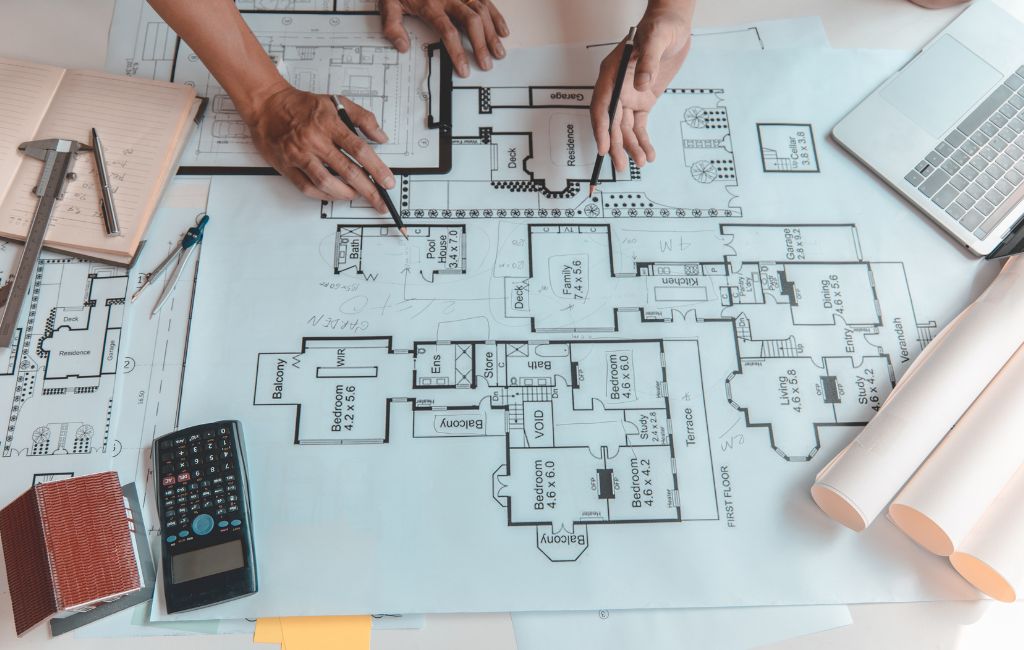
-
Table of Contents
- Future of Architecture: Integrating Technology and Design
- Smart Buildings: The Rise of Intelligent Infrastructure
- Sustainable Design: Building for the Future
- 3D Printing: Revolutionizing Construction
- Virtual Reality: Enhancing Design and Visualization
- Artificial Intelligence: Transforming Design and Construction
- Case Studies: Real-World Applications
- The Edge, Amsterdam
- Bosco Verticale, Milan
- 3D-Printed Office Building, Dubai
- Guggenheim Museum, Helsinki
- Autodesk Toronto Office
- Conclusion
Future Architect Integrating Technology
The intersection of technology and design is reshaping the architectural landscape. As we move forward, the integration of advanced technologies with innovative design principles is not just a trend but a necessity. This article explores how these elements are coming together to create the buildings of tomorrow.
Smart Buildings: The Rise of Intelligent Infrastructure
Smart buildings are at the forefront of this transformation. These structures utilize a network of interconnected devices and systems to optimize performance, enhance comfort, and reduce energy consumption. Key features of smart buildings include:
- Automated lighting and climate control systems
- Advanced security and surveillance technologies
- Energy-efficient appliances and systems
- Integrated building management systems
For instance, The Edge in Amsterdam is often cited as one of the smartest buildings in the world. It uses a combination of IoT devices, sensors, and data analytics to create a highly efficient and user-friendly environment.
Sustainable Design: Building for the Future
Sustainability is a key driver in modern architecture. The focus is on creating buildings that are not only aesthetically pleasing but also environmentally responsible. Sustainable design practices include:
- Utilizing renewable energy sources such as solar and wind power
- Incorporating green roofs and walls
- Using sustainable materials and construction methods
- Implementing water conservation techniques
A notable example is the Bosco Verticale in Milan, which features vertical forests that help reduce pollution and improve air quality. This project demonstrates how sustainable design can be both functional and beautiful.
3D Printing: Revolutionizing Construction
3D printing technology is revolutionizing the construction industry. This method allows for the creation of complex structures with precision and efficiency. Benefits of 3D printing in architecture include:
- Reduced construction time and costs
- Minimized waste and environmental impact
- Enhanced design flexibility and customization
- Improved structural integrity and durability
One of the most impressive examples is the 3D-printed office building in Dubai, which was completed in just 17 days. This project highlights the potential of 3D printing to transform traditional construction methods.
Virtual Reality: Enhancing Design and Visualization
Virtual reality (VR) is becoming an invaluable tool for architects. It allows for immersive visualization and interactive design processes. Key applications of VR in architecture include:
- Creating realistic 3D models and walkthroughs
- Facilitating client presentations and feedback
- Enhancing collaboration among design teams
- Improving accuracy and reducing errors in construction
For example, the use of VR in the design of the new Guggenheim Museum in Helsinki enabled architects to explore different design concepts and make informed decisions before construction began.
Artificial Intelligence: Transforming Design and Construction
Artificial intelligence (AI) is playing a significant role in the future of architecture. AI-powered tools and systems are enhancing various aspects of design and construction. Applications of AI in architecture include:
- Optimizing building designs for energy efficiency
- Automating repetitive tasks and processes
- Predicting and mitigating potential issues
- Enhancing project management and scheduling
An example of AI in action is the use of generative design software, which can create multiple design options based on specific criteria. This technology was used in the design of Autodesk’s Toronto office, resulting in a highly efficient and innovative workspace.
Case Studies: Real-World Applications
Several projects around the world exemplify the successful integration of technology and design in architecture. These case studies provide valuable insights into the future of the industry.
The Edge, Amsterdam
The Edge is a prime example of a smart building. It uses IoT devices and sensors to monitor and control various systems, resulting in a highly efficient and comfortable environment. The building has achieved a BREEAM rating of 98.36%, making it one of the most sustainable office buildings in the world.
Bosco Verticale, Milan
The Bosco Verticale, or Vertical Forest, is a pair of residential towers that incorporate over 900 trees and 20,000 plants. This innovative design helps reduce pollution, improve air quality, and provide a unique aesthetic. The project has won numerous awards for its sustainable design.
3D-Printed Office Building, Dubai
This office building in Dubai was constructed using 3D printing technology, significantly reducing construction time and costs. The project demonstrates the potential of 3D printing to revolutionize the construction industry and create more efficient and sustainable buildings.
Guggenheim Museum, Helsinki
The design process for the new Guggenheim Museum in Helsinki utilized virtual reality to explore different concepts and make informed decisions. This approach allowed architects to create a more innovative and functional design while minimizing errors and reducing costs.
Autodesk Toronto Office
The Autodesk Toronto office was designed using generative design software powered by AI. This technology enabled the creation of multiple design options based on specific criteria, resulting in a highly efficient and innovative workspace.
Conclusion
The future of architecture lies in the seamless integration of technology and design. Smart buildings, sustainable practices, 3D printing, virtual reality, and artificial intelligence are transforming the industry. These advancements are not only enhancing the functionality and efficiency of buildings but also paving the way for more innovative and sustainable designs. As we continue to explore and embrace these technologies, the possibilities for the future of architecture are limitless.